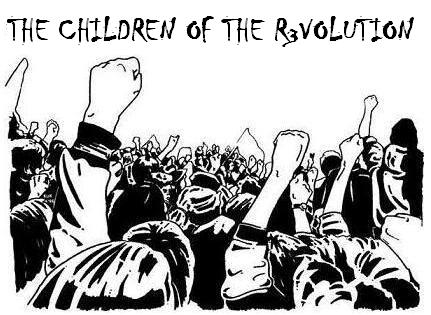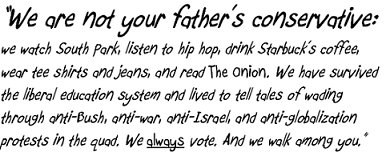BY CINCINNATUS
 On November 26, a group of armed extremists attacked a railway station, two hotels, a café, a hospital, a cinema and a Jewish outreach center in the Indian metropolis of Mumbai, home of the famous Bollywood. Using automatic rifles, small arms and explosives, they murdered 188 people and injured 293 more. They took hostages in the course of their four-day attack, not to exact demands but to prolong media attention on what became an all-out street war. Current reports estimated that the terrorists numbered anywhere from 10 to 25. By the time Indian forces had regained control of the situation, all but one of the terrorists lay dead. The lone survivor, Azam Amir Kasav, was subdued in a firefight with police and subsequently beaten by an angry Indian mob before being taken into custody. Since then he has divulged many of the details of the planning and execution of the attacks. Recent intelligence reveals that many of the terrorists were trained for at least a year by Pakistani ex-army officers.
On November 26, a group of armed extremists attacked a railway station, two hotels, a café, a hospital, a cinema and a Jewish outreach center in the Indian metropolis of Mumbai, home of the famous Bollywood. Using automatic rifles, small arms and explosives, they murdered 188 people and injured 293 more. They took hostages in the course of their four-day attack, not to exact demands but to prolong media attention on what became an all-out street war. Current reports estimated that the terrorists numbered anywhere from 10 to 25. By the time Indian forces had regained control of the situation, all but one of the terrorists lay dead. The lone survivor, Azam Amir Kasav, was subdued in a firefight with police and subsequently beaten by an angry Indian mob before being taken into custody. Since then he has divulged many of the details of the planning and execution of the attacks. Recent intelligence reveals that many of the terrorists were trained for at least a year by Pakistani ex-army officers.We have gotten used to the idea of terrorist attacks as sudden, mass-casualty events, usually a car or suicide bomb, detonating in a crowded place or building. And this has typically been the MO of extremists of all stripes up to this point. Much has been made of the recent WMD report by a bipartisan commission, which has stated that, likely as not, a nuclear or biological attack will take place by the year 2013 (I’m always skeptical of these arbitrary and unsubstantiated numbers, which are intended only to create the sense of urgency needed to kick the government into action). Having been schooled in this area myself however, I agree that the likelihood of a biological attack is such that it is surprising we have yet to see one. But the Mumbai attacks raise a whole new set of questions. Here were a group of 10 to 25 terrorists, armed with weapons that, if one were to try hard enough, are available on American streets. Using small arms, they managed to lay siege to the largest city in India and inflict nearly 400 casualties. Reports now indicate that they had intended to harm as many as 5,000. Bombs did go off, but the shooting went on for four days. The attack did not end quickly. It was prolonged and painful and terrifying. If confounded the local police forces and presented a challenge to Indian troops, who were alarmed at how well-trained and well-armed the extremists were (one man commented that they knew the layout of the buildings they had seized better than the Indians did).
Now imagine that, when you woke up to see the attack reported on CNN, the caption under Breaking News read “Los Angeles, California” instead of “Mumbai, India.” I know some of you are shouting, “don’t be such a sensationalist fear-monger!” I promise you, I am neither. What I aim to illustrate is that, if the terrorist movements of the world interpret the Mumbai attack as a success (and I imagine that they do), a trend of coordinated low-tech assaults in major metropolises across the globe could turn our conception of international terrorism and domestic security on its head. We’ve seen it before here at home on a much smaller scale (Virginia Tech, Columbine, University of Texas), but never perpetrated by foreign fighters or sleeper cells with a political agenda. We know it can happen, we know the weapons are available, and we know that they are very difficult if not impossible to prevent. All that can be done is to react to the crisis as swiftly as possible. American police terminology would define the Mumbai terrorists as “active shooters;” that is to say they were free to move about and seek out new victims while evading police. Current doctrine among police forces is to relentlessly pursue and engage the suspects, bypassing the dead and wounded, rather than cordon off the area and await the SWAT team. This means that street officers rather than SWAT officers are the most likely to initially engage the perpetrators.
Americans police forces are some of the most well-trained in the world, but the average street cop remains armed only with a sidearm and shotgun. Faced with a well-trained, heavily armed shooter or shooters, he is outmatched. SWAT team response times can be anywhere from 15 to 20 minutes depending on the location. By the time they arrive, the shooters may have moved on, or taken hostages and holed up. Bear in mind, shooters at multiple locations throughout the city may be active as well and dividing police resources. And all this time, news helicopters would be hovering over the scene broadcasting the events live to the world. The good news is that once the SWAT team arrives on the scene, they are ruthlessly efficient at neutralizing their targets (see here).
Of course the desirability of mounting such an attack on American soil would be weighed against the prospect of encountering armed opposition among the target population (civilians). Which brings me to an interesting and salient point. Would America’s concealed carry laws deter such an attack? It’s an old argument, one that has cropped up from time to time following shootings. The data shows that permissive concealed carry does in fact reduce violent crime in locations where it is enacted. Could we assume that attackers like the ones in Mumbai would be similarly deterred, were they forced to anticipate a civilian population that could fight back suddenly and without warning before authorities even arrived on the scene? It is likely that they would. Unfortunately, some of the likeliest targets (major metropolitan areas such as New York City, Los Angeles, Washington, DC), are the ones with the most stringent gun restrictions. DC, until only earlier this year, had a blanket ban on gun ownership altogether. Cities like New York have what is called a “may-issue” concealed carry policy, which is to say you have the right to request permission, but the city has the right to deny unless you can provide just cause. As a result, the city issues very few permits, unless circumstances are extenuating or (ironically) you happen to be a politician/celebrity (such as Charles Schumer, Joan Rivers or Robert DeNiro). Sadly, India's restrictions on gun ownership are severe, and the police were the first and only line of defense against the terrorists during the initial attack. How they responded is debatable.
Would it be a reasonable solution for large American cities, which receive a significant chunk of the Homeland Security budget, to consider not only providing sophisticated training for their police force, but also more permissive forms of concealed carry? I believe it would. I’m not talking about the Homeland Security Department handing out firearms to every able-bodied man, woman and child from the back of a van here. I’m talking about allowing the civilian population to effectively train and arm itself to aid law enforcement and deter violent crime, including terrorism. It works wherever it’s tried. Can you imagine, the American people providing their own national security? If only the Founders had thought of something like that…
"The supposed quietude of a good man allures the ruffian; while on the other hand arms, like laws, discourage and keep the invader and plunderer in awe, and preserve order in the world as property. The same balance would be preserved were all the world destitute of arms, for all would be alike; but since some will not, others dare not lay them aside … Horrid mischief would ensue were the law-abiding deprived of the use of them."
-Thomas Paine
"Are we at last brought to such humiliating and debasing degradation, that we cannot be trusted with arms for our defense? Where is the difference between having our arms in possession and under our direction and having them under the management of Congress? If our defense be the real object of having those arms, in whose hands can they be trusted with more propriety, or equal safety to us, as in our own hands?"
-Patrick Henry







2 comments:
I think you draw a false parallel between the deterrence of violent crime and the deterrence of terrorist attack.
The former is undertaken for material gain or for retributive purposes, and fundamental to the conception of either is escape and survival. For terrorism, the goal is a large fear-inducing event, with death as the known absolute outcome. For criminal purposes, the addition of massive risk serves as a total deterrent to material crime, and raises the threshold for retributive actions. Large terrorist events (large bomb, introduction of biological or nuclear elements into public facilities, etc) are so narrowly constructed that after the sole objective is completed, any limit on additional mayhem is immaterial.
That being said, your *ahem* fresh *ahem* proposal for an armed and trained citizenry would definitely limit the damages of a Mumbai-type attack. But perhaps a more colorfully obscure idea is whether the armed criminal element is a deterrent. Statistics show that "prison justice" is focused towards two crimes: child molestation/murder, and ironically, attacks against the state.
If your armed extremists were to land in Los Angeles, as your hypothetical proposes, they would be wise to stay out of Compton.
While I see part of your point on deterrence (I still think terrorists, even those who don't plan on surviving their attack, are given pause when considering the possibility that their targets would embarrass them on the world stage by shooting and killing them, perhaps before their spree even gained steam), the facts remain. If the hypothetical attack were to occur, lives would most likely be saved by an armed and vigilant citizenry.
I'm not even going to touch your comments on Compton.
Post a Comment